
Vegetation Around Las Vegas
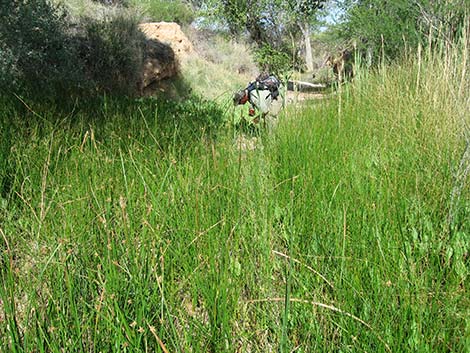 |
General: Sedges (Scripus spp.) are grass-like plants that mostly grow in wetlands and usually grow knee-high to head-high, with stems that tend to be 3-sided and with leaves that occur in whorls of three. Several species of Sedge occur around Las Vegas, and while some can be recognized, it is sufficient for the casual observer to recognize Sedges in contrast to Grasses (e.g., Stipa and Poa spp.) and Rushes (e.g., Juncus spp.): Sedge stems have edges, |
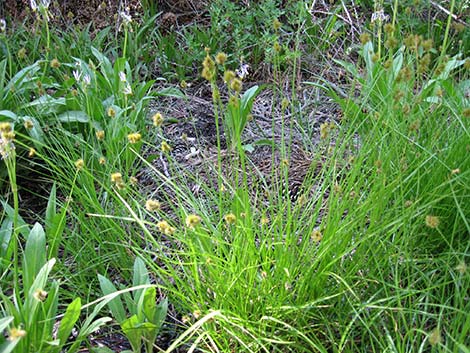 |
Sedges mostly occur in wetlands, along washes and rivers, and in other wet areas in the Lower Sonoran (Creosote-Bursage Flats), Upper Sonoran (Mojave Desert Scrub and Pinyon-Juniper Woodland), and Transition (Yellow Pine Forest) life zones. However, they also occur in dry situations at higher elevations, including the Canadian (Pine-Fir Forest), Hudsonian (Bristlecone Forest), and even the Arctic (Alpine Tundra) life zones. Around Las Vegas, look for sedges in desert canyons, mountain meadows, and around wetlands and ponds such as the Henderson Ponds, the Wetlands Preserve, and Floyd Lamb County Park. |
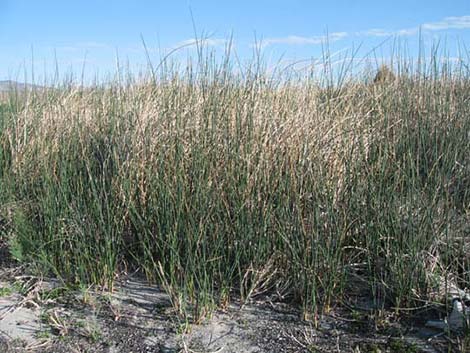 |
Family: Sedge (Cyperaceae). Other Names: Bulrush, tule. Plant Form: Grass-like. Height: To 6-feet. Stems: Erect, 3-sided (at least near the tip of the stem or near the inflorescence), solid. Leaves: Blades long and narrow (like tall grass), generally emerging from near the base of the stem. Flowers: Inflorescence is a panicle. Individual flowers small. Seeds: Small, oval or 3-sided seed. |
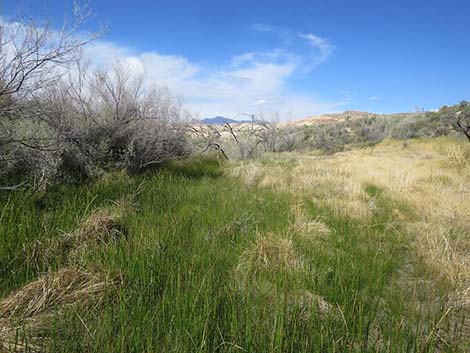 |
Habitat: At lower elevations: pond edges, stream edges, riverbanks, and other wet areas. At higher elevations, found in many habitats, including the summits of the highest peaks. Elevation: From springs on the desert floor to the tops of the highest peaks (12,000 feet in southern Nevada). Distribution: Worldwide. Comments: There are some 110 genera and 3,600 species in the Sedge family, with some 200 species in genus Scirpus alone. They mostly all look alike, although some specialists can tell them apart by details of the inflorescence and seeds. For casual observers, it is sufficient to recognize Sedges in contrast to Grasses and Rushes: Sedges have edges, Rushes are round, and Grasses have leaves all the way to the ground. |
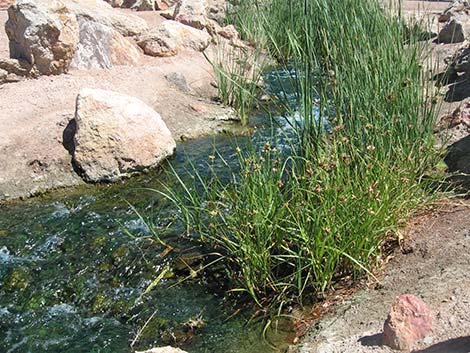 Sedges growing along a stream |
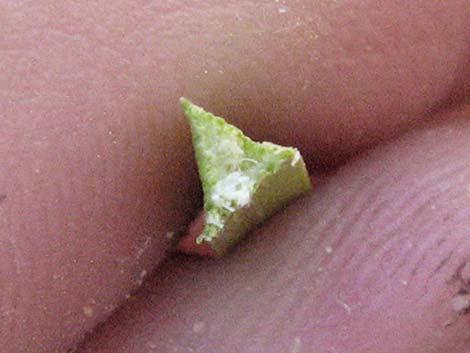 Sedge stems are triangular in cross-section, at least near the flowers |
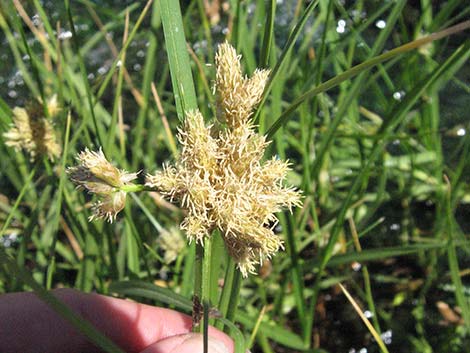 Sedge flowers cluster at the tip of the stems |
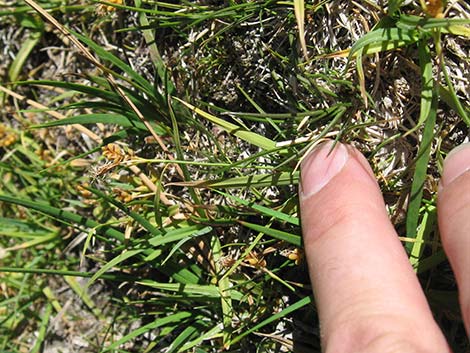 While most species of sedges grow tall, some a short |
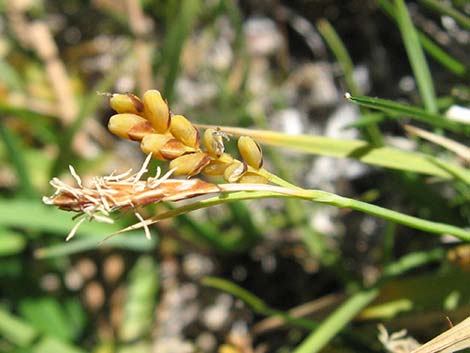 Flowers and seeds on a low-growing species of sedge |
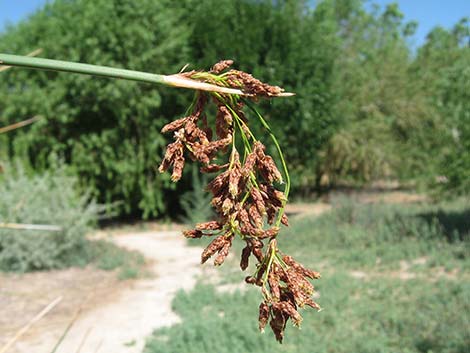 Flowerhead growing from near the tip of the stem |
 Sedge flowers |
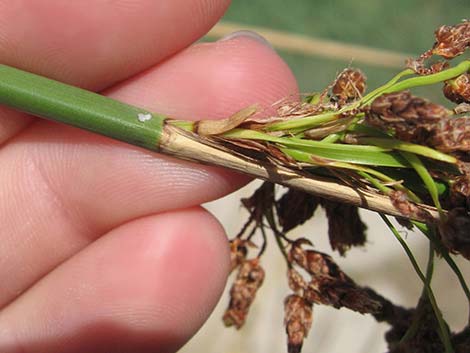 As in all species of sedge, the stem is triangular at least at the tip |
All distances, elevations, and other facts are approximate.
![]() ; Last updated 220112
; Last updated 220112
| All Aquatics | Plant Species Index | Glossary | Copyright, Conditions, Disclaimer | Home |